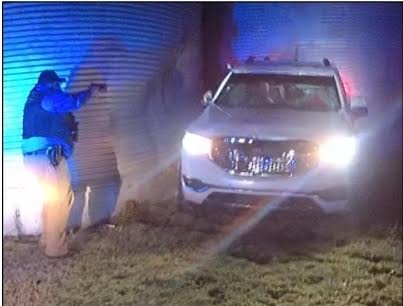Homeless crisis highlights need for housing programs
Published 10:35 am Sunday, April 3, 2016
Housing programs are becoming more of a necessity as homeless shelters and other agencies increasingly provide residents with social services and support they need to become self-sufficient.
According to the 2015 Point-in-Time survey from the U.S. Department of Housing and Urban Development, 564,708 people were homeless in the United States on a given night in January 2015, the most recent count available. The Kentucky Housing Corporation PIT Count for January 2015 was 4,852 homeless, with 97 homeless people in Warren County.
Trending
Currently, the only homeless shelter in Bowling Green is The Salvation Army and one of the biggest issues managers come across is finding affordable housing for their clients, which is critical when trying to help families and individuals make changes to avoid becoming homeless in the future, Capt. Sally Love said.
“Being able to have a place to live that’s affordable is critical or they’re going to fail again,” she said. “The subsidized housing is critical and there is not nearly enough in the community.”
The U.S. Census Bureau reported that out of about 12 million single-parent families in 2014, more than 80 percent were headed by single mothers, with more than 51 percent living in extreme poverty with incomes below half the federal poverty level – about $9,900 for a family of three.
Love said there are several reasons why people become homeless, but the key to success is to narrow down those reasons and help them be successful. She said the clients have to be willing to do the hard work and not everyone is willing to do it.
“If they’re willing to do (the work), we’re willing to work with them. If they choose not to then they probably won’t succeed, at least not the first time and they’ll come back and try again,” Love said.
Capt. Mark Love said that once The Salvation Army begins to identify the root causes, it will be able support clients going forward with its own resources and those in the community. The Salvation Army provides transitional housing, but the problem is there isn’t enough subsided housing to meet the need, he said.
Trending
The Salvation Army is exploring ways to use more space within its shelter to meet the growing need for services in the community and by the end of April will have six efficiency apartments to serve families and children.
“The (housing) vouchers haven’t increased, but they’re getting spread thinner now,” Mark Love said. Our clients “are ready and they have no place to go. We need to get more people in our community behind this and understand the need to leverage all the resources we have in the community to bring some of the available housing up to standard and make them more affordable.”
Section 8 vouchers are funded by the Department for Housing and Urban Development. Bowling Green is allotted 606 housing vouchers a year that can be allocated to qualified families, according to Brent Childers, director of Neighborhood and Community Services for the city of Bowling Green. He said that recently the homeless preference was amended, which, along with other qualifications, will allow more homeless families to go to the top of the waiting list of more than 800 people.
“We recognize the need for more affordable, quality housing in Bowling Green. We’re looking for opportunities to improve it,” Childers said.
Childers said the city may have 606 vouchers, but still has a finite source of funds it can distribute to stay under the budget that HUD provides. He said the number of vouchers hasn’t changed, but the money has fluctuated.
Compared to the general population, people who are homeless are at greater risk of infectious and chronic illness, poor mental health and substance abuse. They are more often victims of violence and have a mortality rate four to nine times higher than those who are not homeless, according to the Centers for Disease Control and Prevention.
Abraham Williams, executive director of the Housing Authority of Bowling Green, said subsidized housing includes public housing and Section 8 and that both programs are good, but he agrees there aren’t enough Section 8 units.
“We need more vouchers and more public housing,” Williams said. “We have about 175 people on our waiting list now and I’m quite sure Section 8 has quite a few people on their waiting list. More public housing needs to be built that’s decent, safe, affordable and subsidized to help people get on their feet.”
The Affordable Housing Gap Analysis 2016 said Kentucky has a shortage of 95,405 affordable units just to meet the needs of renters earning 30 percent or less of area median income, and that 72 percent of those renters are severely housing cost burdened, meaning they spend more than 50 percent of their incomes on rent.
When it comes to fixing the housing crisis, the issues stemming from this crisis and what an ideal housing program would look like, the best approach to subsidized housing involves very few requirements and qualifications, Brandon Render, chair of the Homeless and Housing Coalition of South Central Kentucky, said in an email. It doesn’t restrict access to the program due to background (criminal or rental) and provides an acceptable amount of financial assistance to individuals and families to find homes that are in good condition and in better neighborhoods, he said.
“It’s estimated that the average length of homelessness is about two weeks, while roughly 80 percent of people who are homeless can find housing without assistance,” Render said in an email. “When dealing with those who are chronically homeless, though, it’s best to target the root of their homelessness and evaluate the best route for housing that person. Oftentimes, it’s a case-by-case basis that doesn’t allow for a one-size-fits-all method to housing.”
Williams said ideal housing would be close to transportation, grocery stores and jobs, so if someone doesn’t have a car, he or she can walk or take public transportation.
Mark Love said a couple of things would be needed to create the ideal housing program, such as some duplex units for families and a single-person complex.
According to the PIT survey, 64 percent of people who were homeless were individuals and 36 percent who were not alone had children. Twenty-three percent of those homeless were children younger than 18. The Kentucky Department of Education’s Count of Public School Children Experiencing Homelessness in the 2014-15 School Year was 29,941 unduplicated children with 109 children classified as homeless in Warren County.
“We have a family of five children here now and 50 to 60 residents that we’re looking to find housing for,” Mark Love said.
Williams said the Housing Authority has several programs to assist clients, such as the Welfare to Work program.
“It’s a combination of city programs and supportive services throughout the whole city. Not just the housing portion, but the medical portion,” Williams said. “It’s a partnership with the Community Action, Housing Authority, transportation and just a variety of programs.”
Sally Love said the community is growing, and when that happens there will be a growth in the homeless population as well.
“One of our biggest issues is the length of time our clients stay because there isn’t a safe, affordable place for them. If they’re following their program, we’re not going to ask them to leave,” she said. “It’s a win, win when we can get these families and individuals stable. That’s the best thing for the community.”
— Follow faith/general assignments reporter Simone C. Payne on Twitter at twitter.com/_SimonePayne or visit bgdailynews.com.






